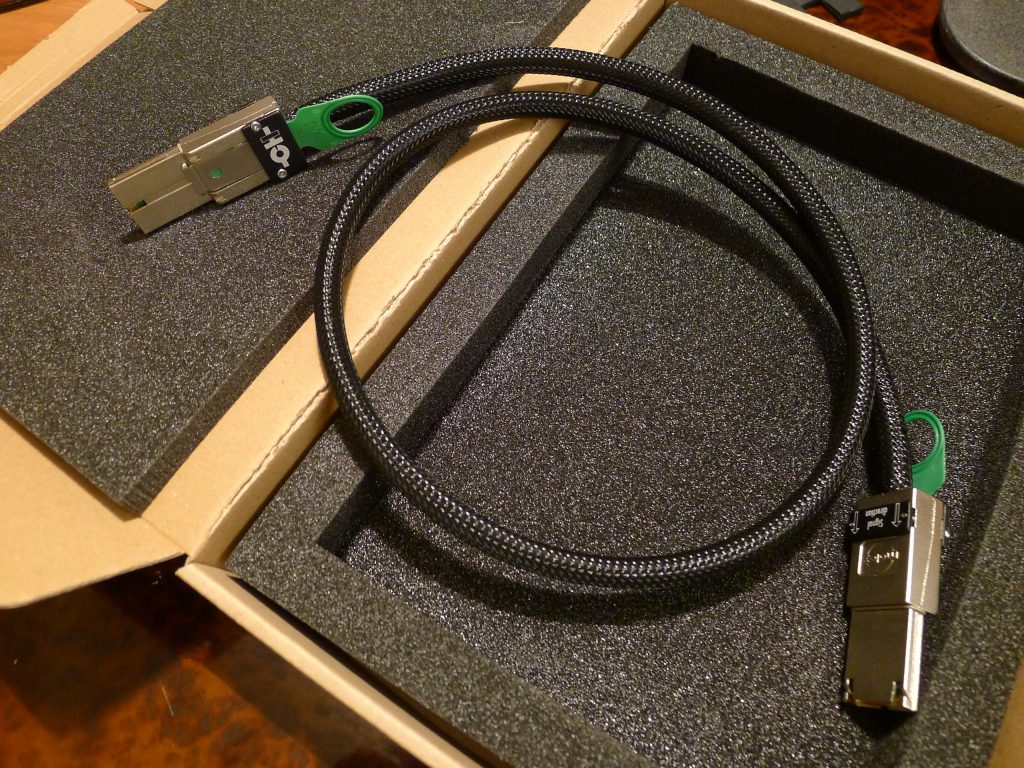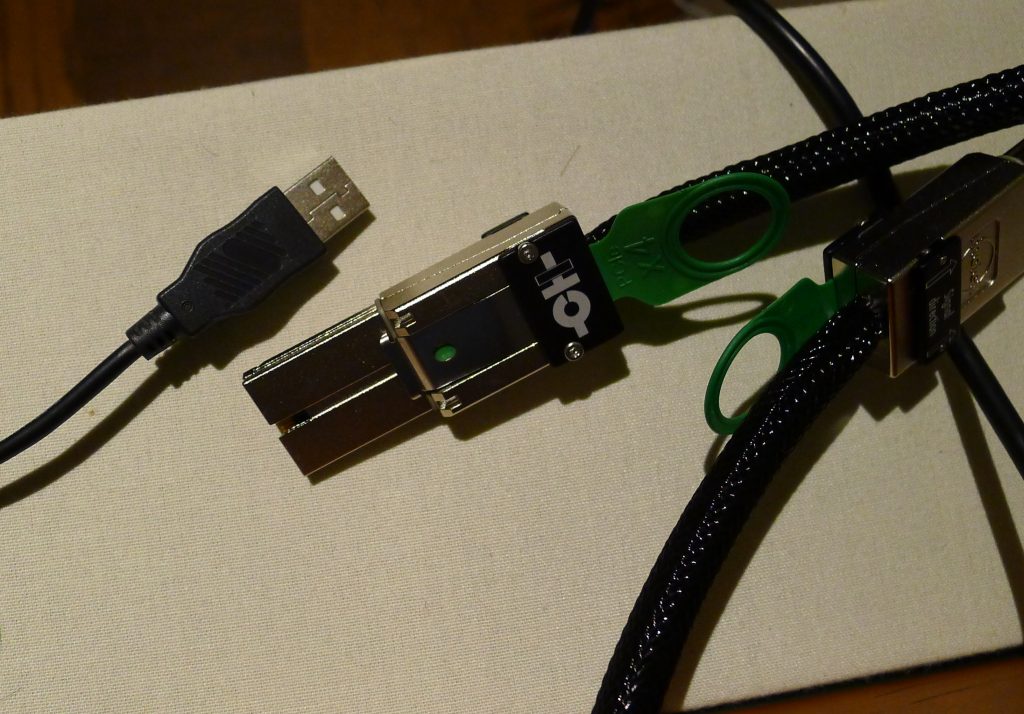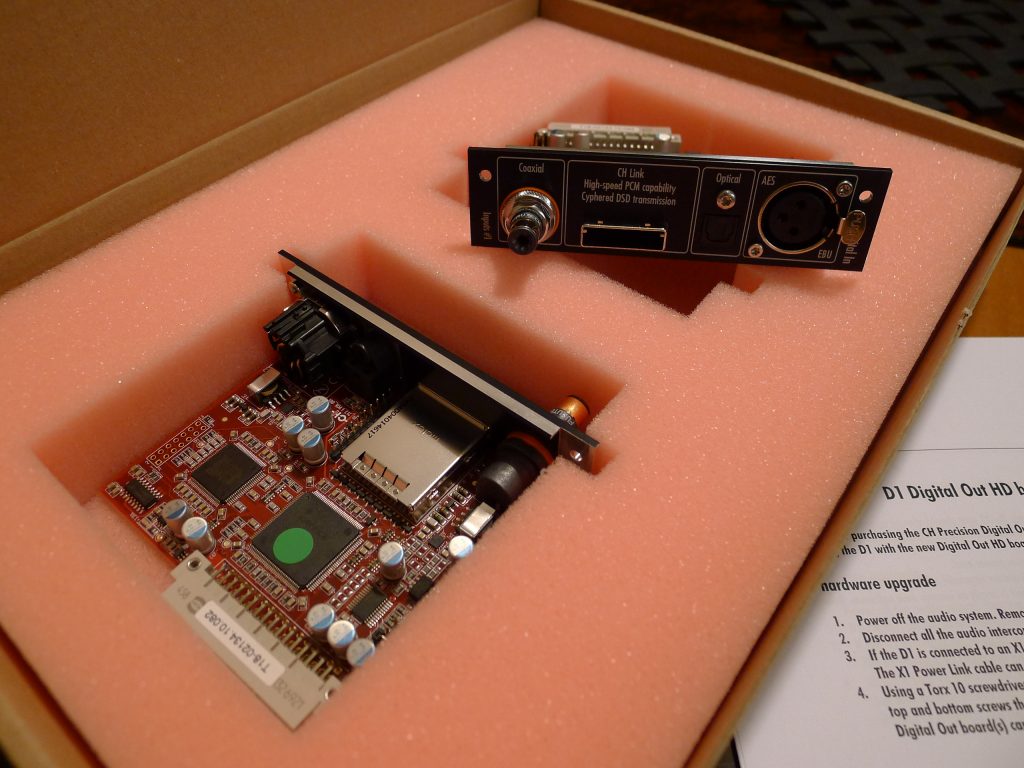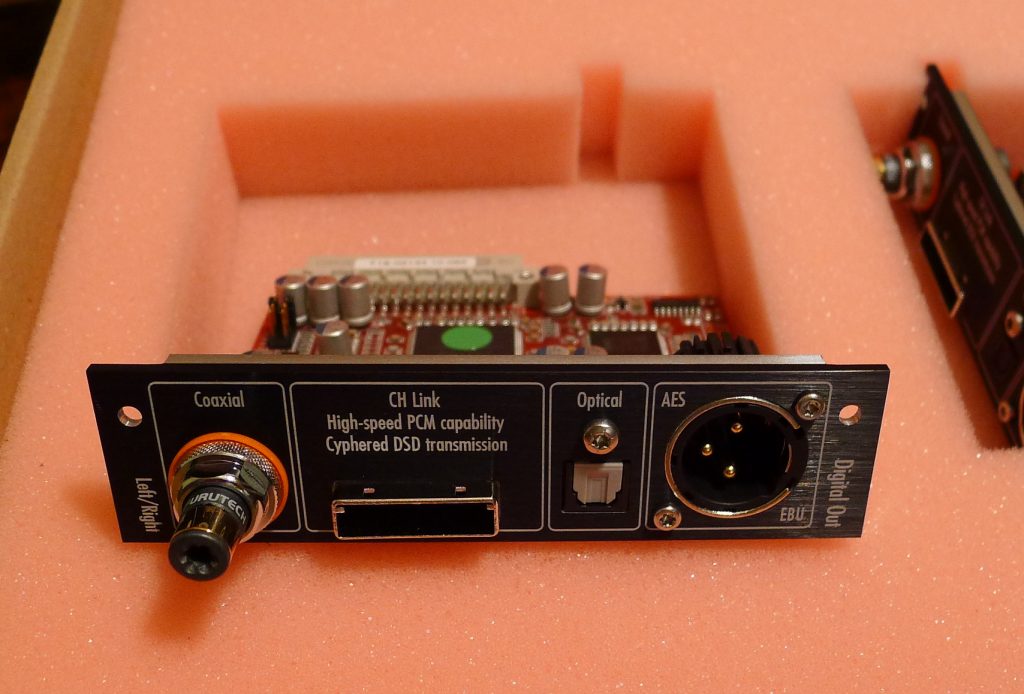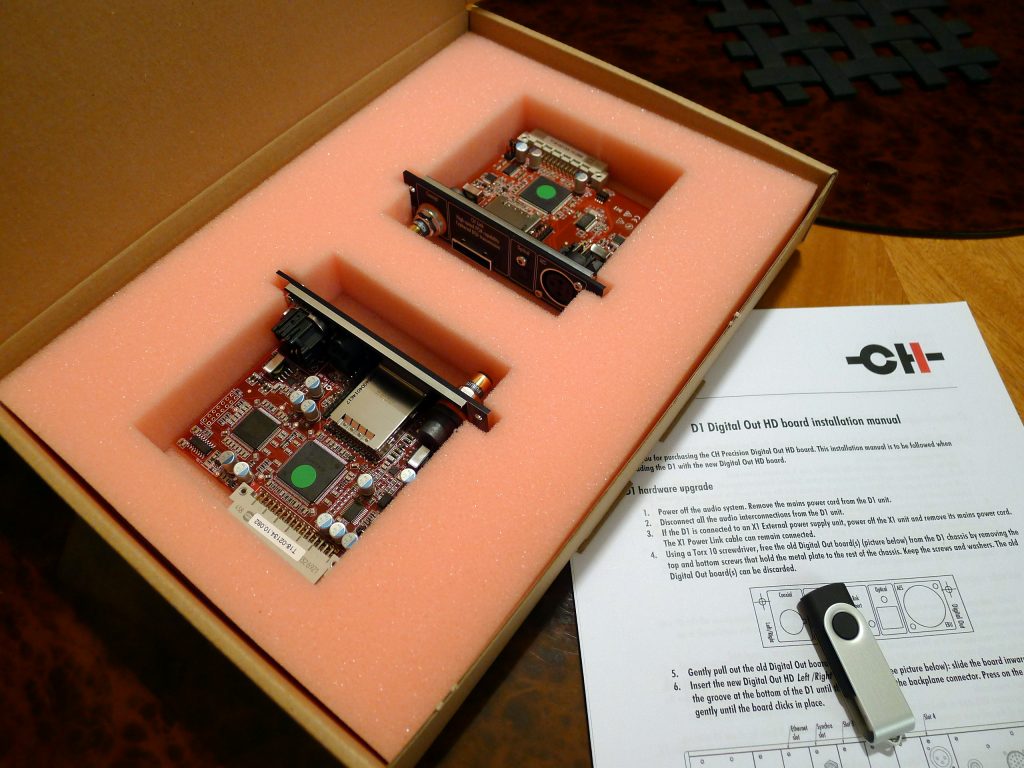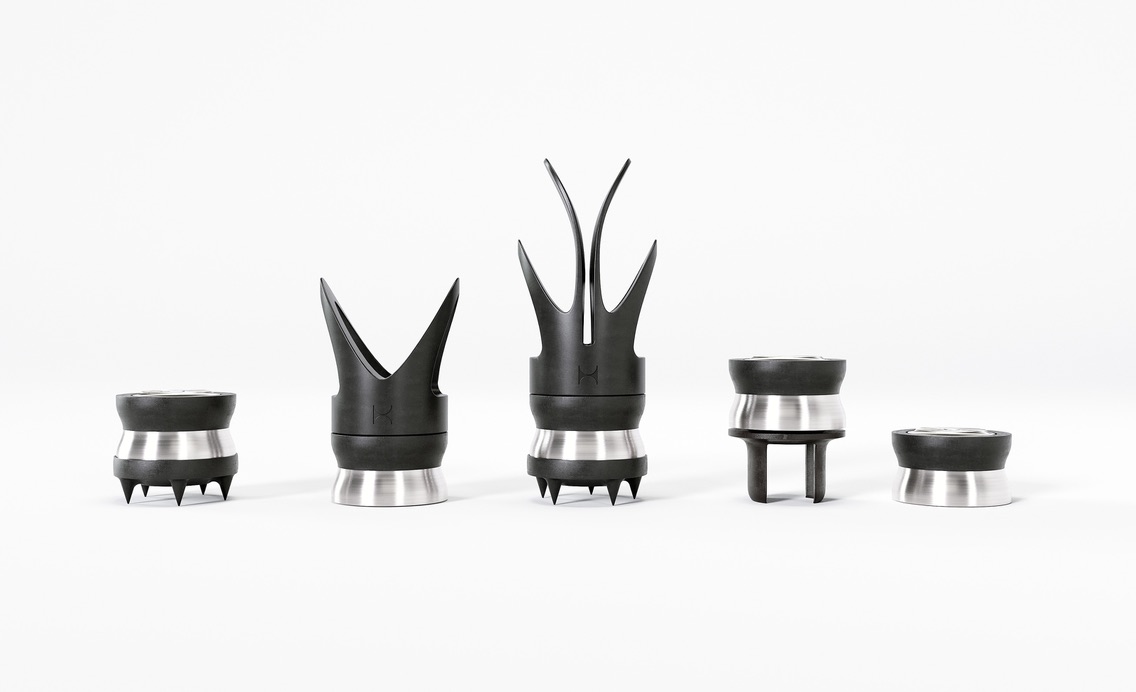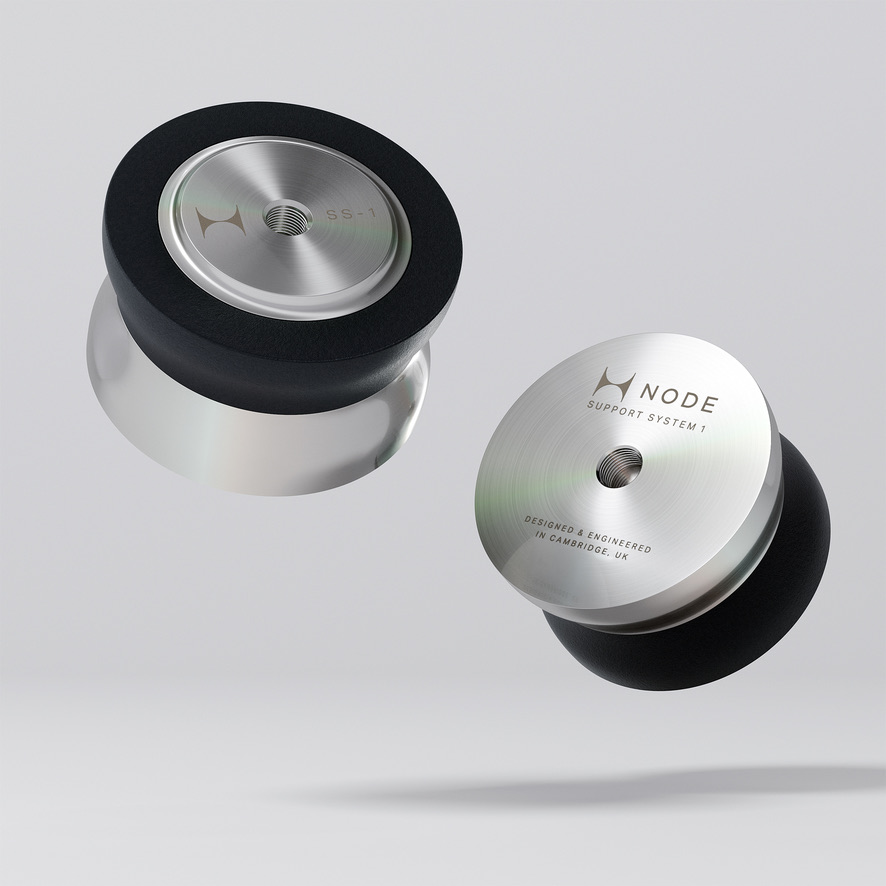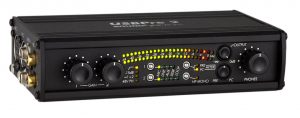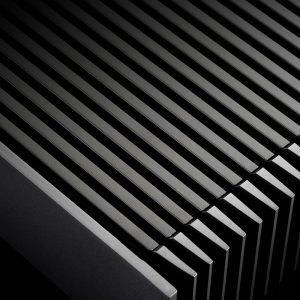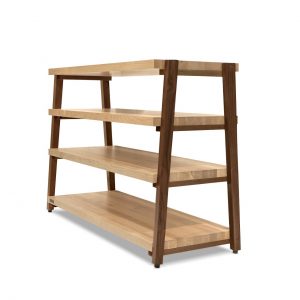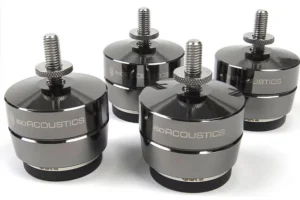What's New?
I've calculated that every time I leave my apartment, it costs me $50 on average. In an odd way, that makes me feel patriotic, like I'm doing my bit to keep the consumer economy humming. Doesn't it make me a good citizen?
It was late summer and the doldrums had set in, so I went perambulating this time in virtual space, where I gravitate to audio related sites. I opened the CH Precision website, clicked on the NEWS tab…Holy cow, what is all this stuff that nobody told me about? My screen was flooded with product announcements rolling by one after the other.
Amidst lots of interesting stuff, one item especially caught my eye: a CH Link HD cable. That is of definite interest. Cables have been my bag lately and the proprietary digital link that CH uses has not changed since the D1 SACD/CD player was introduced eight years ago—a long time in the world of wire design.
The CH Link HD cable
The news brief said:
A few years after the introduction of the CH Link cable for transmission of the digital stream between the D1 drive and C1 D/A controller, a new cable is introduced that replaces the original link. The CH Link HD is based on the latest generation of high-speed backplane connectors and impedance-controlled cable.
In combination with the new D1 digital output HD board and C1 digital input HD board, the end result is dramatically improved.
What's Changed?
That last sentence hints this is not just a wire upgrade. Reading more closely, the DIG OUT board on the D1 transport and the DIG IN on the C1 DAC are being replaced. I found out later when I got the kit there's also significant firmware upgrades for both D1 and C1 (and X1 if you're using one of these external power supplies).
My enthusiasm began to wane as the scope and potential expense escalated. What exactly are "high-speed backplane connectors and impedance-controlled cable?" Wondering if all this was worth bothering about, I inquired with Raphael Pasche, the CH press rep:
Yes, absolutely. The new set of HD boards is an upgrade for the C1 and D1 as well as a powerful processing platform that we'll use to implement new features in the near future.
Well, the gauntlet was thrown. Given my considerable investment in CH digital, I figured I had no choice. I put in my order.
HD cable compared to a stock USB cable
The New HD Parts
The new CH Link HD cable is about the same diameter as the original with the same black dielectric, but uses Molex PCIe x4 connectors, which are intended for industrial use. This resembles a gigantic USB plug—I've never seen the like.
Digital In board
Digital Out board
The HD boards are chock full of circuitry: FPGA and DSP chips; drivers (DIG OUT HD) and receivers (DIG IN HD) for the AES, S/PDIF and TOSLINK outputs and inputs. Additional circuitry is dedicated to the CH LINK HD interconnection.
HD boards and instructions
Implementation
I did the install myself. CH sent me the parts including printed step-by-step instructions. Implementation took about an hour and a half and was not difficult. (Alternately, dealers are trained and can do it for you.) Then I powered up to make sure everything was working.
An Old Favorite
With a name like HD Upgrade, what comes to mind? High Definition, of course. I assumed it would target speed and resolution—I'd probably get more page turns and chair scrapes. I also figured I would be looking at several days of burn-in before it sounded like anything. Not so on all counts.
I put on an old favorite, Sanctuary with Larry Willis leading a quartet (Mapleshade 09932). I haven't played it in years, but I recalled one track with a guest vocalist doing A Balm in Gilead that never failed to speak to me, sometimes stimulating those old tear ducts.
Right off the bat it was audibly better than yesterday. The band sounded terrific, they all grew bigger in size, tonal density, and impact. It was smooth and coherent, with noticeably more bass. But the biggest difference came from so far out in left field it made me question my ears. Instead of High Def chair scrapes, I heard more air, liquidity, and continuity.
Digital Filter Discussion
I was so startled I reached out to CH and learned that the HD upgrade implements a new type of digital filter that changes the way up-sampling is performed in the C1 DAC.
Up-sampling typically consists of zero padding, adding samples with a zero value in between the real audio samples in the bit stream and then applying a low-pass filter. The new algorithm derives samples that are not null and inserts them between the true samples. Raphael provided the following explanation:
Our new filter works differently. We define a window containing a number of input samples. Then we define a polynomial (a curve) that fits perfectly all the points within the window. By finding the curve that goes through all the audio input samples, we take into account the shape and the slope (tendency) of the audio curve. We can then extract as many samples as needed in between the input samples to reach 768kHz (depending on the input sample rate).
Hence, the biggest change I heard was a huge improvement in flow. I might even stretch it to say digital nudged closer to being continuous.
Listening to A Balm in Gilead, the sound had me engaged, but there was one unforeseen side effect: the singer's very noticeable intonation issues kept me at arms' length from experiencing the emotions of loneliness and despair it usually called forth. Oh, well. Clear-sightedness is always best—even if it dislodges a deep-seated, but falsely grounded, emotional response? Yes.
Returning to the question, "Is it worth bothering about?" If you're one of the holdouts who still support a D1 transport and a separate C1 DAC, and possibly the T1 Master Clock—IMHO, still the best way to play digital music until I'm convinced otherwise—the CH HD upgrade will run you $7000. It is not cheap by any means. However, the improvement in sound quality is surely worth it.
If your source is a music server (no transport), you can still take advantage of the HD upgrade and benefit from the new filter. In this case the only hardware you need is the DIG IN HD board for the C1. At first I thought, "Why do you need to get that, as you will never use those inputs?" I was told the DIG IN HD board, beyond being a set of inputs, is also a platform containing processing resources used by all of the inputs (including Ethernet and USB streaming).
To give some perspective, I recall a similar scenario when YG Acoustics came out with an upgraded tweeter for the Anat and Sonja speakers. I already had $75K in my Anat Signatures; replacing the tweeter would cost $9400, including in-home pro installation. I gave that the nod and have no regrets.
I gave the CH HD Upgrade the nod, with no regrets—quite the contrary.
CH Link HD Cable
Retail: $2000/m, addl meter $150
D1 digital output HD board
Retail: $2500
C1 digital input HD board
Retail: $2500
CH Precision
Manufacturers' Comments
In a few words, the HD boards are platforms providing more processing power to the C1 DAC and D1 transport. The C1 up-samples the incoming signals to 768kHz (705.6kHz respectively) before conversion. Up-sampling requires filtering post up-sampling. The HD boards enable us to make more complex filters that replaced the three original filters in the C1.
The HD board, being a platform with more processing power, allows us to develop new features in the future. As all our firmware upgrades are free, all the new features we'll implement come for free. Not only do the HD boards allow us to develop new standards in the audio industry, it also allows the owner of the C1 and D1 to keep their unit current, in essence protecting their investment.




